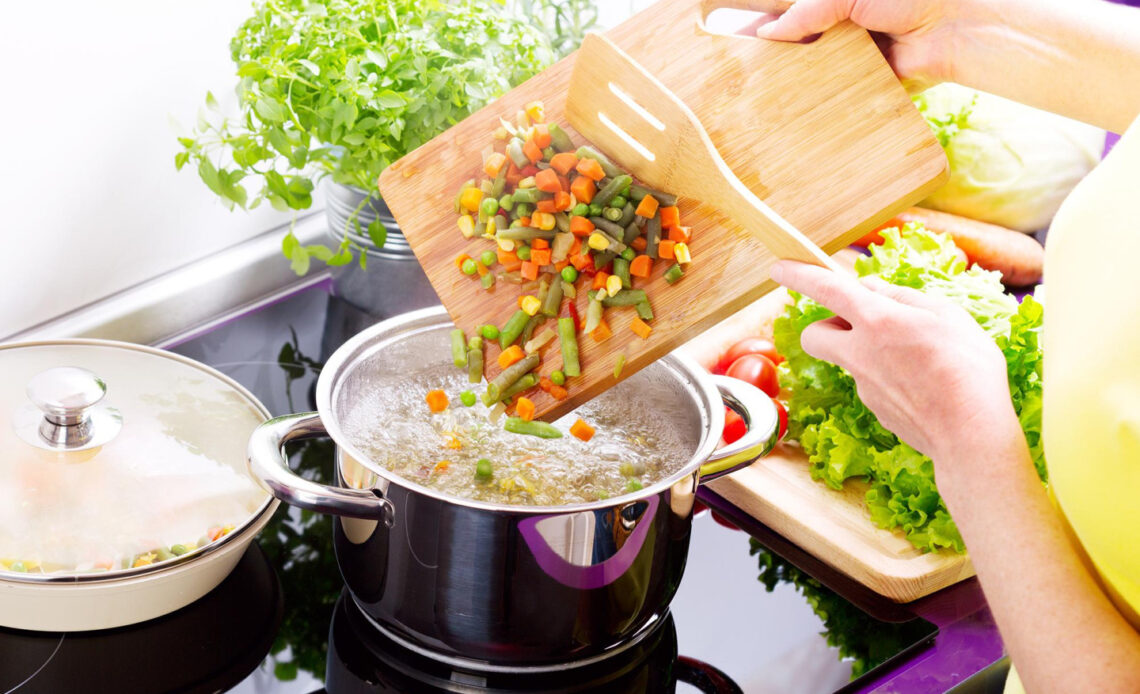
“Table 4” is intended for the treatment of acute intestinal diseases of various origins. Products and methods of their preparation in such a diet are strictly limited. The “Table 4” diet is prescribed for several days or months, and in some cases you have to adhere to the diet constantly. We asked experts what “Table 4” is, what foods are allowed and what can replace this diet.
- For what
- The rules
- What is possible
- What not to do
- Menu for the week
- Recipes
Anastasia Timoschenko, therapist, gastroenterologist-nutritionist at the Mprofiko clinic on Zemlyanoy Val;
Evgenia Ovchinnikova, pediatrician, gastroenterologist at the Semeynaya clinic network.
For what diseases is the “Table 4” diet beneficial?
Today, nutritionists use a different system of standard diets, which has much in common with the “tables” of the past
The “Table 4” diet is a special gastroenterological diet that is prescribed for a while for various intestinal disorders, including diarrhea and constipation. Diet No. 4 was compiled in the last century by the Soviet therapist and nutritionist Manuil Pevzner. In total, he developed 15 treatment tables for different groups of diseases. In Soviet times, Pevzner diets were used in hospitals and sanatoriums, and they were also recommended to patients outside hospitals during the recovery phase.
The “Table 4” diet, according to Pevzner’s classification, is suitable for the treatment of (1):
- chronic colitis, including in the acute stage;
- intestinal diseases occurring with diarrhea and constipation;
- various infectious lesions of the gastrointestinal tract;
- with pronounced fermentation in the intestines and rotting processes;
Pevzner number tables have almost never been used in medical practice over the past 20 years, says Anastasia Timoschenko, internist, gastroenterologist-nutritionist at the Mprofiko clinic on Zemlyanoy Val. In 2003, the Ministry of Health of the European Federation removed tables numbered 1–15 from the nutrition recommendations for patients in medical institutions. These were replaced by five other major diets (2).

Standard diet system (3)
| Options for standard diets | Designations | Numbered diets |
|---|---|---|
| The main version of the standard diet | ATS | 1, 2, 3,4 5, 6, 7, 9, 10, 12, 13, 14, 15 |
| Diet option with mechanical and chemical sparing (gentle diet) | SHD | 1b, 4b, 4c, 5p (1 option) |
| Diet option with increased amounts of protein (high protein diet) | VBD | 4e, 4ag, 5p (Version II), 7c, 7d, 9b, 10b, 11, R-1, R-II |
| The second option for a high-calorie diet | MIA | 11 |
| The second option for a high-calorie diet | NBD | 7b, 7a |
| Reduced calorie diet option (low calorie diet) | NKD | 8, 8a, 8o, 9a, 10s |
What is the essence of the Table 4 diet?
The Table 4 diet has several variations – 4a, 4b, 4c, 4e, 4ag
The essence of the Table 4 diet is to eliminate any intestinal irritation. To do this, food is ground, crushed or mashed into a porridge or puree. Food is prepared exclusively by steaming, stewing or boiling. Optimum temperature for prepared dishes: from 15 to 60-65 °C. The distribution of KBJU in “Table 4” or the main diet looks like this (3):
- kilocalories — 2170-2400;
- proteins – 85-90 g;
- fats – 70-80;
- carbohydrates – up to 330 g.
With the “Table 4” scheme, like any other medical nutrition, the general rules for medical diets are followed (3):
- Fractional meals. The daily diet consists of five to six meals in small portions.
- Food on time. Optimal hours for each meal: breakfast at 8:00–9:00, lunch at 14:00–15:00, dinner three to four hours before bedtime, at 18:00–19:00. Late dinner at 21 :00.
- Intervals between meals. Breaks between meals should not exceed four hours.
- Energy value. The distribution of daily calorie content for each meal is: breakfast 30%, lunch 40%, dinner 20-25%, last snack 5-10%.
- Temperature of food. For warm food and main courses – about 55-65 ºС, cold – at least 15 ºС.
- Water mode. You need to drink up to 2 liters of liquid per day.
Modifications of the “Table 4” diet (A, B and C)
The “Table 4” diet has several variations – 4a, 4b, 4c., 4e, 4ag. According to Anastasia Timoschenko, the differences between them are associated with certain stages in which intestinal disease occurs – from acute diarrhea to the recovery period (4):
- “Table 4a”. Suitable for acute phase. In the diet, limit carbohydrates and increase proteins.
- “Table 4b”. Administer as the disease subsides. Some snacks are allowed in the diet, for example, hard cheese or jellied meat.
- “Table 4c”. Helps you switch to a normal diet, but still excludes foods that increase fermentation and gas formation.
Diet “Table 4” for children
For a child over a year old and for an adult, “Table 4” is practically no different, says Evgenia Ovchinnikova, pediatrician, gastroenterologist at the Semeynaya network of clinics. The diet consists of similar products that are stewed or boiled and then pureed. According to the doctor, a diet similar to Table 4 is also suitable for children with acute viral intestinal infections with abdominal pain. A special group of patients consists of children with intestinal diseases who adhere to a special diet almost constantly.
Basic rules of a gentle diet for children according to the recommendations of the Ministry of Health:
- Regular and frequent meals. The rhythm of meals is up to six times a day, with equal intervals between each.
- The food is prepared without oil or frying. “Table 4” for children is steamed, stewed and boiled food, chopped with a blender or pureed.
- Temperature Hot dishes should not exceed 60°C, and cold dishes should have a temperature of at least 30°C.

What you can do with the Table 4 diet

The “Table 4” diet menu consists of soups, main dishes and snacks. All food is served moderately warm or cold. For “Table 4” and its analogues the following are allowed:
- Meat: veal, turkey, beef and chicken. Serve only in processed form (meatballs, cutlets, soufflé).
- Fish: cod or pike perch. The fillet is boiled or chopped and steam cutlets are prepared without breading.
- Eggs: two or three a week. Prepare a soft-boiled egg or make an omelette from steamed whipped whites.
- Dairy products: selectively, depending on…
